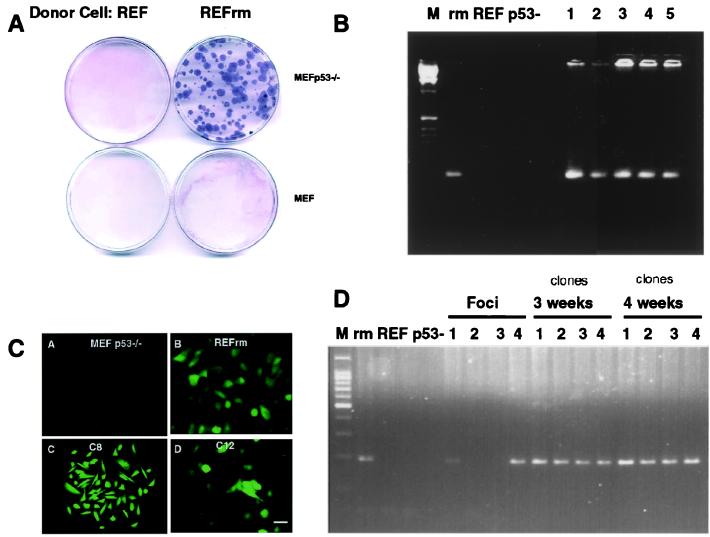Figure 3.
Induction of hygromycin resistance in MEF p53−/− cells. (A) MEF or MEF p53−/− cells were cultured with apoptotic bodies from REF or EGFP-Hygr expressing REFrm cells. Coomassie staining of hygromycin-resistant MEF p53−/− colonies cultured with REFrm apoptotic bodies is shown. (B) PCR detection of the hygr gene in donor REFrm (rm), REF, recipient MEF p53−/− (p53-), and the hygromycin-resistant REFrm × MEF p53−/− colonies (1–5). (C) Detection of the Hygr-GFP fusion protein in MEF p53−/− recipient cells, REFrm donor cells, and hygromycin-selected REFrm × MEF p53−/− clones C8 and C12. (Bar = 10 μm.) (D) Detection of the hygr gene in foci induced by cultivation of REFrm apoptotic bodies with MEF p53−/− cells. Approximately 60% of the foci were Hygr -positive without hygromycin selection. The Hygr gene could be maintained for over 4 weeks in the presence of hygromycin selection. Positive and negative controls were the same as in B.

